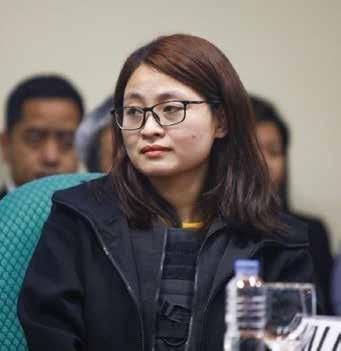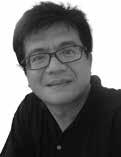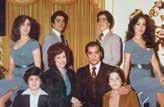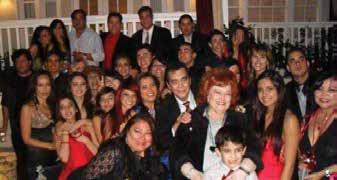




WASHINGTON, D.C. — As immigration enforcement efforts intensify under the Trump administration, communities across the United States—particularly immigrant households—are grappling with uncertainty, fear, and unanswered questions about their rights.
This guide lays out what U.S. Immigration and Customs Enforcement (ICE) officers can and cannot legally do during immigration arrests, and how individuals can protect themselves and their families during such encounters.
ICE authority and where it stops
ICE is a federal civil enforcement agency— not a criminal one. Immigration violations are generally civil matters, not criminal offenses. This means:
ICE does not have the same powers as police and cannot enter private homes without either a judicial warrant signed by a judge or clear, voluntary consent from an adult resident.
An administrative warrant issued by ICE (commonly Form I‑200 or I‑205) is not sufficient for entry into a private residence.
ICE can make warrantless arrests in public
u PAGE 5
real

by AJPress
ing 96 licensed medical professionals, in schemes that allegedly defrauded Medicare, Medicaid, and private insurers of $14.6 billion, with estimated actual losses of about $2.9 billion
The operation brought together the DOJ, FBI, HHS-OIG, DEA, and 12 state attorneys general, spanning all 50 federal districts. It led to the seizure of over $245 million in assets—cash, luxury vehicles, and crypto—and CMS proactively halted more than $4 billion in fraudulent payments.
At the center: Operation Gold Rush
WASHINGTON, D.C. — On June 30, 2025, federal officials announced the largest health care fraud crackdown ever—resulting in charges against 324 individuals, includHotel101 becomes first Filipino company to list on Nasdaq after $2.3 billion SPAC merger

Executives and team members of Hotel101 Global and JVSPAC Acquisition Corp. ring the
SPAC merger milestone was celebrated with confetti and cheers, symbolizing a proud moment for Philippine enterprise on the international financial stage.
THE Philippine real estate sector continues to demonstrate steady growth in the first half of 2025, defying global volatility.
According to global real estate services company Santos Knight Frank, the office sector is taking the lead with occupancy levels rising as more business process outsourcing (BPO) firms choose to expand within Metro Manila, reaffirming its
position as a top outsourcing destination.
“The current geopolitical climate is marked by rapid and unpredictable changes, creating uncertainty for investors, businesses, and consumers alike. Despite this, the Philippine real estate sector continues to demonstrate remarkable resilience, anchored by strong market fundamentals, proactive
Filipina tennis trailblazer takes a set off defending champion Krejčíková
by AJPress
LONDON — History was made on Centre Court as Alexandra “Alex” Eala became the first Filipina in the Open Era to compete in the Wimbledon women’s singles main draw. The 20-year-old left-hander
made an early statement by taking the first set against defending champion Barbora Krejčíková, before eventually falling in a competitive threeset match, 3–6, 6–2, 6–1.
Eala opened confidently, breaking Krejčíková’s serve and attacking with controlled ag-
by AJPress
NEW YORK – Hotel101 Global Holdings Corp., the international hospitality subsidiary of the Philippines’ DoubleDragon Corporation (PSE: DD), made history this week by becoming the first Filipino owned and led company to list on the Nasdaq Stock Exchange. The milestone follows the completion of a US $2.3 billion business combination with U.S.-based JVSPAC Acquisition Corp. (NASDAQ: JVSA).
The merged entity will trade under the ticker symbol HBNB, with shares set to begin public trading on July 1, 2025.
u PAGE 2
by Keisha Ta-asan Philstar.com
MANILA — The Philippines is expected to remain the fastest-growing economy in the Association of Southeast Asian Nations (ASEAN) region this year, bolstered by low inflation and room for monetary easing.
However, global uncertainties, weak private sector sentiment and persistent trade imbalances could temper the pace of expansion, according to two research groups.
Aris Dacanay, ASEAN economist at HSBC, said the Philippines is expected to post the fastest economic growth in Southeast Asia in 2025 at 5.4 percent, outpacing its regional peers de-
u PAGE 4
PAGE 1
This transnational fraud involved a group tied to Eastern Europe and Russia that used stolen U.S. identities to covertly acquire over 30 durable medical equipment suppliers. They submitted more than $10.6 billion in false Medicare claims for items like catheters and glucose monitors using personal information from over 1 million Americans
While CMS intercepted more than 99 % of Medicare payments, supplemental insurers still paid out nearly $1 billion before intervention . Once victims began receiving unrequested medical items, agency investigations intensified.
FBI Director Kash Patel said, “Health care fraud drains critical resources from programs intended to help people who truly need
medical care. Today’s announcement demonstrates our commitment… With more than $13 billion in fraud uncovered, this is the largest takedown for this initiative to date.”
Widespread fraud be yond DME
The sweep also included:
• $1.17 billion in telemedicine and genetic testing fraud (49 defendants)
• Illegal opioid diversion involving over 15 million pills (74 defendants)
• $1.1 billion in amniotic allograft billing fraud (7 providers)
• Additional kickback and referral schemes totaling roughly $1.84 billion in false claims
Matthew R. Galeotti, Chief of the DOJ Criminal Division’s Fraud Section, told reporters, “This is the beginning of a new era of ag-
gressive prosecution and data-driven prevention”
Fraud fighting goes hightech
A new Health Care Fraud Data Fusion Center is operational, featuring AI-powered analytics that analyze complex billing trends in real time.
Awareness in the Filipi no‑American community
DOJ filings show no indications that Filipino-American health professionals are among those charged. But legal experts reiterate that many fraud schemes stem from stolen data or shell contracts, not frontline provider misconduct.
Public advised to be alert Medicare beneficiaries are urged to review Explanation of Benefits notices carefully. Fraud can be reported via 1-800-HHS-TIPS or through oig.hhs.gov. n
PAGE 1
government policies and growing domestic demand,” said Rick Santos, chair and CEO of Santos Knight Frank.
“We continue to see steady demand in the office market from BPO and traditional occupiers. The industrial sector is expanding steadily, driven by growth in manufacturing, logistics, and storage. In residential, Manila continues to position itself as an affordable luxury market, while the hospitality sector is regaining strength with an expanding hotel pipeline across key destinations. As economic tides shift, real estate reaffirms its place as the gold standard of investment—offering longterm value, enduring stability, and tangible growth opportunities,” Santos explained.
Sustained office demand
Net absorption this first half of 2025 stood at 192,000 sqm, driven by move-ins and expansions from the BPO industry. Metro Manila office market’s supply reached to 8.8 million sqm with the introduction of 158,000 sqm of new office stock.
More than 403,000 sqm of office stock is expected to be completed in the latter part of the year, with an additional of more than half a million square meters over the next five years.
More BPO companies con-
tinue to choose Metro Manila as their preferred office destination with the launch of more Grade A and Prime buildings especially in BGC, Taguig and Makati. Taguig now has the lowest vacancy rate of 15 percent and the highest average asking rate at P1,248 per sqm per month—21 percent higher than the overall average of P1,024 per sqm per month.
Makati follows at 17 percent vacancy rate and P1,220 per sqm per month asking rate.
‘Affordable’ luxury resi dential market
Manila continues to retain its position in the super prime market, placing 9th in Knight Frank’s Prime Global Cities Index in Q1 2025, with a 5.5 percent year-on-year increase in prices. Globally, this makes Manila an “affordable luxury market” that provides more value for its consumers compared to other markets in the Asia Pacific.
Meanwhile, prime villages in Metro Manila continue to demonstrate steady growth in the first half. Forbes Parks leads with a 15 percent increase to P825,000 per sqm, followed closely by Dasmarinas, Magallanes and Ayala Alabang at 14 percent.Limited availability and exclusivity continue to drive the demand in these exclusive subdivisions.
Industrial hotspots
The transaction was carried out through a SPAC, or Special Purpose Acquisition Company—a faster and less traditional path to going public. A SPAC is a publicly listed “shell” company created specifically to raise funds and merge with a private company, allowing the private firm to become publicly traded without going through a standard initial public offering (IPO).
In this case, Hotel101 Global became a public company in the U.S. through its merger with JVSPAC, without the need for a traditional IPO roadshow or pricing process. SPAC mergers have become popular in recent years as a way for growing companies to access capital and enter the stock market quickly.
• Valuation: US $2.3 billion (post-merger with JVSPAC)
• Start of Public trading : July 1, 2025
• SPAC sponsor: JVSPAC Acquisition Corp.
• Business model: Condotel (real estate + hospitality)
• Current and upcoming locations: Philippines, Japan, Spain, U.S., Saudi Arabia
• Parent company: DoubleDragon Corporation (PSE: DD)
• Founders: Edgar “Injap” Sia II and Tony Tan Caktiong
• Long-term target: 1 million rooms in 100+ countries by 2040
Calabarzon and Central Luzon solidified their status as key industrial hotspots, attracting strong interest from foreign enterprises seeking operational efficiency and access to critical infrastructure.
Average rents in these areas range from P230 to P290 per sqm per month— offering competitive rates for companies in manufacturing, pharmaceuticals, and cold storage. These sectors are driving sustained demand for industrial space.
Resurgence of iconic ho tels
Iconic hotels Sofitel and InterContinental are making a comeback in new strategic locations namely Cebu and New Clark City in Tarlac, respectively, reflecting a renewed confidence in the tourism sector and a shift in hospitality strategy.
Major hotel operators are partnering with local developers to establish more high-end hotels attracting higher-spending tourists, increasing average length of stay and tourist spending to help boost tourism revenue.
From Accor’s partnership with Megaworld for Mercure; Marriott International and CG Hospitality for the rebranding of The Farm at San Benito, Autograph Collection; to Banyan Tree and Hann Resort in New Clark City. (Inquirer.net)
The deal cleared its final regulatory hurdle on June 24, when JVSPAC shareholders approved the merger. Earlier, the U.S. Securities and Exchange Commission declared effective Hotel101 Global’s Form F-4 registration statement on June 2.
A ceremonial bell-ringing took place on June 27 at the Nasdaq MarketSite in New York’s Times Square, where executives celebrated the listing.
“This is a proud moment not just for our company, but for the Philippines,” said Hannah Yulo-Luccini, CEO of Hotel101 Global, in a statement reported by GMA News. “The Nasdaq listing gives us the global platform and credibility to execute our long-term growth plans.”
Hotel101 operates under a unique “condotel” model —selling standardized ho-
tel units to investors, who in turn earn a portion of pooled rental revenues. The company manages the day-to-day hotel operations, allowing for brand consistency while avoiding the capital intensity of traditional hotel chains.
Hotel101 currently has properties in the Philippines, with additional developments in Japan (Niseko), Spain (Madrid), and the United States (Los Angeles). In 2024, the company signed a major 10,000-room joint venture in Saudi Arabia with Horizon Global Investments.
According to a Reuters interview published June 6, Yulo Luccini said, “The Nasdaq listing gives us the global credibility and platform to scale the brand and execute our longterm growth plans across continents.”
Hotel101 Global is the international venture of DoubleDragon Corporation, which was co-founded in 2012 by Edgar “Injap” Sia II, the entrepreneur behind Mang Inasal, and Tony Tan Caktiong,
founder of Jollibee Foods Corp. Both men remain strategic investors and board members of DoubleDragon and its subsidiaries.
In a statement to GMA News, Sia said, “This is a firstof-its-kind Filipino-led brand entering the global capital markets. We hope it opens doors for more Philippine companies to follow.”
Hotel101 aims to standardize mid-range accommodations worldwide, offering uniform design, automated check-in/out systems, and a tech-driven user experience. The brand has set a long-term target of reaching 1 million rooms in over 100 countries by 2040.
The company’s prospectus describes this as a move toward becoming “the most booked hotel brand globally in terms of room volume.” In a Reuters article published April 8, Hotel101 stated, “The brand will soon be able to cater to business and leisure travelers in the most key cities of the world.” n


by AJPress
SAN ANTONIO, TX — The moment the commissioner said his name, Dylan Harper stood up—not just for himself, but for generations. In a sharp suit and quiet smile, the 19-year-old Rutgers standout embraced his family, pulled his mother close, and walked toward the NBA stage not just as a top draft pick—but as a symbol.
Harper, selected No. 2 overall by the San Antonio Spurs in the 2025 NBA Draft, now shares a rare distinction with Phoenix Suns guard Jalen Green: the highest-drafted Filipino American in league history. But that title, for Harper, is not a statistic. It’s a legacy.
“I just want to represent where I come from,” Harper said during his post draft press conference. “My mom’s side of the family— they’ve put so much into me.”
That side is led by Maria Pizarro Harper, the woman whose name trended just minutes after her son’s. She didn’t make a speech or flash a sign. She just stood there—elegant, grounded, and unmistakably proud. In her son’s success, many saw her handprints: the discipline, the fire, the foundation.
From Bataan to baseline drives
Maria was born in Bataan, Philippines, and moved to New Jersey when she was seven. A former Division I guard at the University of New Orleans in the 1990s, she played with tenacity

and coached with precision. Long before national scouts discovered Dylan, she was putting him through drills on concrete courts at dawn. She coached both of her sons—Dylan and Ron Jr.—at Don Bosco Prep in New Jersey. She was the first coach Dylan ever listened to. Arguably, the toughest one.
“She knows the game,” Harper said in an earlier interview. “And she doesn’t sugarcoat anything.”
That approach worked. Dylan’s path to the pros was not hyped with mixtape culture or viral dunks. It was carved with patience, power,
PAGE 5
spite a downgrade from an earlier 5.9 percent projection.
Vietnam, which is often seen as a regional growth leader, is forecast to expand by a slower 5.2 percent next year, followed by Indonesia (4.5 percent), Malaysia (4.2 percent), Singapore (1.7 percent) and Thailand (1.7 percent).
But at 5.4 percent, Philippine growth is projected to slow down from the 5.7 percent expansion recorded in 2024, as elevated tariffs and external headwinds weigh on economic activity, Dacanay said.
“Uncertainty alone can prevent foreign direct investments. For the Philippines, foreign direct investment is important, around 10 percent of capital formation is FDI-funded,” Dacanay said in a briefing.
“When investors hold back, that weighs on overall investment activity,” he said.
Dacanay noted that many Philippine firms are also holding off on capacity expansion, while demand from major trading partners like the United States remains weak.
Fortunately, he said the country’s direct exposure to the U.S. economy is limited, with only about three percent of gross domestic product (GDP) tied to U.S. demand.
“We still expect growth risks
to be on the upside, especially with inflation running at 1.3 percent. This gives the Bangko Sentral ng Pilipinas (BSP) ample room to cut rates further, possibly down to five percent this year,” he said.
HSBC expects inflation to average 1.8 percent this year before picking up to 2.7 percent next year.
The next rate cut could also happen in October depending on the U.S. Federal Reserve’s policy moves.
HSBC expects the peso to stabilize around the 55 level in the second half of 2025, which could boost capital inflows and support foreign investments.
Despite the external challenges, Dacanay said the Philippines remains resilient and projected 2026 growth at 5.8 percent, down slightly from a previous forecast of 5.9 percent.
Meanwhile, ANZ Research painted a more cautious picture, highlighting structural weaknesses in the private sector that could limit the recovery’s momentum.
“Private investment and exports have been hindered by a lack of productivity growth, while real wage growth has been insufficient to drive a strong rebound in household spending,” ANZ said in its latest economic outlook.
The research firm expects

GDP to grow by 5.1 percent this year, down from 5.7 percent in 2024. It cited declining electronics exports and subdued manufacturing output as key drags on growth.
ANZ also flagged that consumption remains under pressure despite low inflation, as real incomes remain tight and households continue to rely on credit card debt for basic goods.
On monetary policy, ANZ expects the BSP to cut rates by another 50 basis points this year, bringing the policy rate to 4.75 percent. However, it warned that mildly restrictive fiscal policy could dilute the impact of monetary easing.
“While inflation is no longer a concern, we don’t expect a material rebound in domestic demand,” ANZ said. “The absolute price level remains high, and wage growth has not kept pace.
”
Both analysts agreed that the BSP will likely take a data-dependent approach in the coming months, especially as geopolitical risks and oil price volatility could complicate the policy outlook.
“The peso’s reaction to recent oil shocks shows how vulnerable we remain to global supply disruptions,” Dacanay said.
“But the BSP still has space to deepen its easing cycle, as long as inflation remains benign.” n
WASHINGTON, D.C. — A viral social media rumor claiming that President Donald Trump is revoking dual citizenship rights has been thoroughly debunked by legal experts, government agencies, and independent fact-checkers.
Despite widespread sharing online, there is no law, executive order, or federal directive requiring Americans with dual citizenship to give up one nationality or risk losing their U.S. citizenship.
In a fact-check published by Reuters, the outlet confirmed: “No such post about dual citizenship appears on Trump’s official Truth Social account,” and added: “There is no known effort to end dual citizenship in this country.”
The U.S. Department of State also affirms that dual nationality is legally recognized:
“U.S. law does not require a U.S. citizen to choose between U.S. citizenship and another nationality… A U.S. citizen may naturalize in a foreign state without any risk to their U.S. citizenship.”
Filipino Americans unaf fected
For many Filipino Americans who maintain both U.S. and Philippine citizenship, the clarification offers reassurance:
• Dual citizenship remains fully legal and protected.
• No current policy demands renunciation of another nationality.
• Children born in the U.S. retain their full U.S. citizenship rights, regardless of their parents’ foreign nationality. Community organizations and immigration attorneys have urged the public to rely on verified government sources, especially amid a surge in online misinformation.
Bottom line
There is no truth to claims that dual citizenship is being revoked by the Trump administration. Dual nationals —Filipino Americans included— continue to be recognized under U.S. law without needing to choose between nationalities.
For accurate updates, visit travel.state.gov or uscis.gov. (AJPress)
gression to claim the first set 6–3. The Czech veteran, however, found her rhythm in the second set and began forcing errors from the young Filipina. Krejčíková took the next two sets 6–2, 6–1, sealing the match in just over two hours.
According to Reuters, Krejčíková committed five double faults in the opening set before regaining control through improved service and consistent baseline pressure. She later praised Eala’s performance, saying, “What the hell she played in the first
set?... She’s going to be really good in a couple of years.”
Despite the first round loss, Eala’s 2025 season remains her most impressive to date:
• She reached a career-high WTA ranking of No. 56 on June 30, the highest-ever for a Filipino tennis player.
• In March, she made a surprise run to the semifinals of the Miami Open, scoring breakthrough victories against top-ranked players including Madison Keys and Iga Świątek.
• In June, she became the
first Filipina to reach a WTA Tour singles final, finishing runner-up at the Eastbourne International.
FINAL SCORE: Barbora Krejčíková def. Alexandra Eala — 3–6, 6–2, 6–1
While Eala’s Wimbledon journey ended in the first round, her performance against a reigning champion reaffirmed her rising status in women’s tennis. With her breakthrough season still unfolding, the 20-year-old continues to elevate Philippine representation on the international tennis stage. n
PAGE 1
areas, such as streets, courthouses, and open workplaces, but must have probable cause based on more than appearance or language.
What ICE is legally allowed to do
• Arrest in public spaces without a judicial warrant under federal immigration statutes
• Detain and transport individuals across jurisdictions after arrest
• Issue detainers to local jails requesting them to hold individuals for pickup
• Conduct operations in plain clothes and use deceptive methods (though not impersonate local police)
What ICE is not legally al lowed to do
• Enter a home without a judicial warrant or consent
• Force entry using only an ICE-issued administrative warrant
• Make arrests based solely on race, ethnicity, language, or appearance
• Force local law enforcement to cooperate—compliance with ICE detainers is voluntary
Sensitive locations: still un der threat
ICE policy has long recognized “sensitive locations” such as schools, churches, hospitals, and places of worship as areas to avoid for enforcement actions. However, reports indicate a rise in enforcement activity in or near these spaces, raising alarms in immigrant communities.
Legal experts caution that without updated federal guidance or court intervention, even these traditionally protected areas remain vulnerable.
Know your rights if ICE shows up
Legal and immigrant rights organizations emphasize the importance of knowing your rights in the event of an ICE encounter:
1. Do not open the door unless agents present a judicial warrant with your full name and a judge’s signature.
2. Remain silent—you are not required to answer questions.
3. Do not sign any documents without first consulting an immigration attorney.
4. Document the interaction—take notes, photos, or videos if it is safe to do so.
5. Ask for legal representation immediately if you are
detained.
Voluntary cooperation from local authorities
ICE’s ability to detain often depends on cooperation from local law enforcement. However:
Detainer requests (asking jails to hold individuals) are not mandatory.
Multiple courts have ruled that holding someone solely based on an ICE detainer without a judicial warrant may violate the Fourth Amendment.
Some jurisdictions have signed 287(g) agreements that allow local officers to carry out certain immigration enforcement duties. These agreements have sparked legal and public debate across the country.
For immediate legal support or information, contact:
• National Immigration Law Center (www.nilc.org)
• ACLU Immigrants’ Rights Project (www.aclu.org/immigrants-rights)
• Immigrant Defense Project (www.immigrantdefenseproject.org)
Stay informed. Stay prepared. And when ICE comes knocking, remember—you still have rights. (AJPress)
PAGE 4
The viral moment
Maria Harper didn’t intend to go viral—but she did. As Dylan was interviewed live on ESPN moments after being drafted, the cameras caught Maria standing behind him, composed and radiant in a black dress. Her poise, confidence, and visible pride instantly captured viewers’ attention.
Social media lit up. One user wrote, “Respectfully, Dylan Harper’s mom is the star of the NBA Draft.” Others called her “a smoke show,” and “the real MVP of the night.” Maria, for her part, stayed quiet, letting the moment belong to her son. But in the hours that followed, clips of her appearance were shared across platforms, and her role as Dylan’s first coach was widely celebrated.
Later in an ESPNW interview, Maria described the moment as “surreal,” adding, “The NBA is a very exclusive club. I’m just so proud of him.”
Basketball’s cultural heart beat
In the Philippines, basketball isn’t just played—it’s lived. In gymnasiums, schoolyards, and on rain-soaked driveways,
it’s the cultural heartbeat of the nation. From makeshift hoops in far flung rural towns to sold-out arenas in Metro Manila, the game pulses through Filipino life like second nature.
Harper’s rise felt personal for many. After all, it’s not often that someone with Filipino bloodline walks across the NBA draft stage as one of the first two names called.
It wasn’t just a career milestone—it was a mirror held up to millions of fans who finally saw someone they could point to and say, that’s ours.
He now joins a tight fraternity of Fil-Am NBA standouts: Jordan Clarkson, the Utah Jazz guard and former Sixth Man of the Year who suited up for Gilas Pilipinas; Jalen Green, the explosive Phoenix Suns guard who went No. 2 in 2021; Jared McCain, the sharpshooting rookie for the Philadelphia 76ers who proudly acknowledged his Filipino roots after being drafted in 2024; and Raymond Townsend, the original trailblazer who made history in 1978 as the first Filipino American to play in the NBA. Spurs reloaded In San Antonio, Harper steps into a team in transformation. With 7’4” French
phenom Victor Wembanyama already on the roster—and Rookie of the Year Stephon Castle joining him—the Spurs are quietly assembling one of the most exciting young cores in the league. The addition of All-Star guard De’Aaron Fox only raises the stakes.“Man, I feel great. I feel good. I almost cried,” Harper admitted. “I felt every emotion in that moment. I’m just excited to get started with the organization.” There’s still a summer league to grind through, veterans to impress, a system to learn. But none of that dulls the brilliance of this milestone. Harper has already become something more than a draft pick.
The quiet flame Dylan Harper didn’t need theatrics on draft night. No over-the-top celebration. Just a quiet nod, a deep breath, and a walk to the stage with purpose. He understood the weight of the moment—not just for himself, but for his family and the millions watching who saw part of their story in his. A product of both NBA bloodlines and Filipino grit, Harper symbolizes a generational shift in visibility and impact. n







ON the Fourth of July, the United States comes together in celebration — barbecues and fireworks, parades and patriotic songs.
It is a day that honors the signing of the Declaration of Independence in 1776, when a group of revolutionaries envisioned a nation built on liberty, equality, and self-rule.
For millions of Americans, including the vibrant and growing Filipino American community, this date holds meaning. But it also carries historical complexity.
For Filipino Americans—many of whom straddle two cultural identities and two national stories—July 4 is not only about the birth of the United States. It also echoes the Philippines’ own journey to sovereignty, a path deeply entwined with the very country now celebrating its freedom.
A shared calendar, a divergent past Few remember that the Philippines once cel-
allen espinosa, arlyne Marasigan, nikolee Marie seraFiCo-reyes, and Heidi MaCaHilig
ON May 27, 2025, the Teacher Education Council approved a “reframed” set of Professional Education Courses for pre-service teachers.
At first glance, it appears neatly organized under four domains: The Learner, The Teacher, The Learning Process, and The Teaching Process. It is packaged with modern priorities—learn-
ebrated its independence on July 4 as well.
On that day in 1946, the United States granted formal sovereignty to the Philippines after nearly 50 years of colonial rule.
For many older Filipinos, especially those who immigrated in the mid-20th century, this date carried emotional and political weight. But that independence was hard-won and long delayed.
In 1898, Filipino revolutionaries had already declared their independence from Spain. Yet, in the aftermath of the Spanish-American War, the Treaty of Paris transferred control of the archipelago to the United States. One empire had simply been replaced by another. What followed was the Philippine-American
er-centeredness, inclusivity, literacy, and extended practicum.
But beneath this structure lies a dangerous void. The orientation is glaringly individualistic, apolitical, and ahistorical—detached from the socio-political, socio-economic, and historical realities of the Philippine education system it claims to reform.


War—a brutal, often overlooked conflict that claimed hundreds of thousands of Filipino lives and marked the rise of the United States as a colonial power.
The U.S. justified its rule through language like “benevolent assimilation” and civilizing missions—words that ring hollow when measured against the realities of occupation and resistance.
Where in this reframing is the teacher’s role in analyzing and challenging the system they are entering? How will future educators examine the structures of inequality, exclusion and colonial legacies haunting Philippine education? Where are they trained not only to survive the system, but to change it?
IT’S painful to say it, but it’s a fact that young Filipinos today are among the dumbest in the world. It’s already widely known how we’ve ranked at the bottom of the Program for International Student Assessment (Pisa) on reading, science, and mathematics. The World Bank reported a 91 percent learning poverty rate in the Philippines in 2022,
which means less than one in every 10 third graders could read and understand what they read. The 2019 Trends in International Mathematics and Science Study (TIMSS) placed Philippine Grade 4 students last in math and science among their peers in 58 participating countries, well below the global average and even worse than our 2003 performance. The 2019 Southeast Asia Primary Learning Metrics (SEAPLM) study put our Grade 5 students below their peers in most of our neighbors, ex-
cept for Laos and Cambodia. All told, various international education rankings consistently show our elementary and high school students to be among the weakest performers in the world. In the face of the Fourth Industrial Revolution and the rapidly advancing age of artificial intelligence, it’s worrying to imagine how utterly uncompetitive our workforce, hence our economy, would be in the emerging future. Analysts gush over the “demographic sweet spot” we
Publication of a Client’s Material does not constitute an a greement to continue publication.
Client agrees and covenants to indemnify AJPI and its officers against any and all loss, liability, damage, expenses, cost, charges, claims, actions, causes of action, recoveries, judgments, penalties, including outside attorneys’ fees (individually and collectively “Claims”) which AJPI may suffer by reason of (1) Client’s breach of any of the representations, warranties and agreements herein or (2) any Claims by any third party relating in any way to Client’s
by Dianne sampang
MANILA — Former Educa-
tion Secretary Br. Armin Luistro has been appointed by Pope Leo XIV as a member of the Dicastery for Institutes of Consecrated Life and the Societies of Apostolic Life.
This appointment was announced by the Vatican Press Office on Tuesday, June 24. According to the website of the Vatican, the dicastery is a department under the Roman Curia responsible for promoting, encouraging, and regulating the practice of evangelical counsels.
Luistro is the superior general of the De La Salle Brothers, also known as Brothers of the Christian Schools, a congregation committed to the mission of education in 80 countries. He is the first Filipino to assume this title.
The La Salle Global on Wednesday, June 25 welcomed Luistro’s appointment to the dicastery.
“This appointment is a clear sign of the synodal path that we, as Lasallians, are called to

walk in communion with the Church,” it said in a statement.
“We extend our best wishes to Brother Armin in this new mission, trusting that his service will be a valuable contribution to the entire consecrated life of the Church,” it added.
According to the Catholic Bishops’ Conference of the Philippines or CBCP News, the De La Salle Brothers, led by Luistro, met the new pope during an audience in the Vatican last May 15. The brothers marked the 75th anniversary of the proclamation of St. John
Baptist de La Salle as the patron saint of Christian teachers.
Luistro served as the Department of Education secretary under the administration of late former President Benigno Aquino III.
La Salle Global said that Luistro started his teaching career at De La Salle Lipa in Batangas where he served as a religion teacher, class counselor, and campus minister from 1983 to 1986. He was also the president of De La Salle University from April 2004 to June 2010. n
6
The immigrant experi ence: between opportunity and history
Despite this colonial past, the relationship between the Philippines and the United States evolved into something more complex—intertwined by migration, military alliance, shared language, and education.
Today, Filipino Americans make up the third-largest Asian American group in the United States. They are teachers, nurses, engineers, caregivers, elected officials, artists, and soldiers. Filipino migration to the U.S. stretches back centuries—beginning with the arrival of “Manilamen” in California in 1587, and expanding with waves of laborers in the 20th century.
Thousands served under the U.S. flag in World War II, defending both Philippine and American soil, with the expectation of recognition and reward.
Many of those veterans spent their remaining years fighting once again, this time in legislative halls, seeking benefits and promises long denied.
The power of dual con sciousness
To live as a Filipino American is to carry two histories. One is rooted in the American dream—of opportunity, democracy, and justice. The other is shaped by the history of exclusion, colonization, and sacrifice.
This dual consciousness doesn’t weaken patriotism. It enriches it.
Filipino Americans celebrate the Fourth of July with pride—but also with remembrance. They understand that freedom is often imperfect, and that progress requires both celebration and reflection.
From the fields of Delano, where Filipino farmworkers helped spark the American labor movement, to the battlefields of Bataan and Corregi-
PAGE 6
The curriculum’s silence on these questions is deafening. In a country where education is deeply enmeshed in political dysfunction and socio-economic disparity, omitting courses on critical analysis, historical consciousness, and advocacy is not neutral—it is a political act.
It contradicts the principles of critical pedagogy, which call for education that interrogates power structures. This is not mere oversight; it is erasure.
The curriculum emphasizes courses like “Human Growth and Development,” “Foundations of Special and Inclusive Education,” and “The Teacher as a Person and as a Professional”—focused on personal development, psychology and ethics.
These are important, but insufficient. Education is not merely about managing learners’ growth; it is also about shaping citizens who can engage with a nation’s past and fight for its future.
The curriculum seems content with producing technically competent, emotionally intelligent teachers—never mind if they are historically blind, politically disengaged, or environmentally unaware.
dor, where Filipino soldiers fought and fell under the American flag, their presence is woven into the fabric of American history.
They came not just to labor, but to lead. Not just to serve, but to shape.
Most of those World War II veterans are gone now. Their voices have faded, but their stories endure—passed down through families, honored in quiet rituals, and etched into the citizenship of their descendants. Some received belated medals and apologies. Many did not. But all of them belong to the story of this country.
And though their time has passed, their legacy lives on in every Filipino American who celebrates the Fourth not just with fireworks, but with purpose. Between two flags, they do not choose one over the other. They carry both—bearing witness to history, honoring sacrifice, and helping shape a future where freedom truly belongs to all. (AJPress)
of mother tongue-based education? Where is the interrogation of why education is collapsing despite decades of reform?
Equally alarming is the lack of courses that prepare teachers for education as a tool for social transformation. The curriculum fails to cultivate a deeper understanding of how learning shapes—and is shaped by—inequality, ecological degradation, historical distortion and political oppression.
Education is never neutral. It must empower, liberate and foster social justice. Pre-service teachers should be equipped to lead that work.
As Paulo Freire asserted in Teachers as Cultural Workers: Those Who Dare Teach, this preparation is essential. Yet this curriculum prepares them only to implement—not interrogate—the system.
There is a critical difference between “learner-centered” and “contextualized” education. The former focuses on individual needs; the latter roots learning in cultural, historical and political realities.
It refuses to confront education as a political problem—rooted in underinvestment, policy incoherence, and leadership crises. By framing teacher preparation around competencies, the TEC reinforces the illusion that we can fix education without reckoning with its political foundations.
The result is a curriculum that is orderly but hollow, modern-looking but regressive. It offers no space for critical pedagogy that names oppression and cultivates agency. It treats social reality as static and teaching as ideologically neutral. It sidelines teacher preparation as public intellectuals, limits training in community engagement, and excludes preparation for resisting authoritarianism or asserting academic freedom. In short, it leaves no space for hope. Reform must not mean retreat. If we are to reframe teacher education, we must do so with courage—not by sanitizing it of politics, but by embracing its transformative potential.
Even the courses on learning—“Learner-Centered Teaching,” “Literacy Theories,” “Assessment”—center on methods, tools and techniques.
But methods are not ideologically neutral. What philosophies undergird these approaches? What social agendas do they serve? Are teachers being equipped to recognize when assessments reproduce inequality, or when literacy practices are alienating rather than liberating? Technique alone cannot answer these questions; they require cultural, moral, and political clarity.
Most glaring is the absence of any course engaging with the historical and systemic roots of the education crisis. There is no deep engagement with the history of Philippine education—precolonial, colonial, postcolonial to present.
Nowhere is there structured inquiry into how policies and laws have shaped what and how we teach. Where is the critical unpacking of MATATAG, of K to 12, or the contentious implementation
Contextualized education demands engagement with learners’ lived experiences—from urban slums to conflict ridden zones—and recognizes classrooms as ideological spaces.
Without this grounding, “learner-centered” becomes a Western import stripped of substance. A truly Philippine teacher education must develop awareness of how motivation, values, and learning are shaped by society—local and global.
And herein lies the fatal blind spot of the reframed curriculum: its uncritical embrace of apolitical technicalism. It is obsessed with how to teach, but silent on what and why. It reduces teaching to competencies, evacuating philosophical, historical and political dimensions.
It trains teachers to implement, not to resist or reimagine. In doing so, it sustains a modernized “banking model” of education—structured, technocratic, and devoid of praxis.
This omission mirrors the logic of technocratic governance. For years, the state has treated education as a management issue solvable through retraining and data systems.
Education is not merely about schooling—it is about shaping a moral and political identity for the nation. And if teacher preparation fails to produce educators who can read the world as well as the word, we remain trapped in the very system we claim to reform. (Philstar.com)
* * *
The opinions, beliefs and viewpoints expressed by the author do not necessarily reflect the opinions, beliefs and viewpoints of the Asian Journal, its management, editorial board and staff.
• • •
Allen A. Espinosa and Arlyne C. Marasigan are professors at the College of Advanced Studies (CAS) and fellows at the Educational Policy Research and Development Office (EPRDO) of the Philippine Normal University.
Nikolee Marie A. Serafico-Reyes is an associate professor at the Faculty of Behavioral and Social Sciences and also a fellow at EPRDO.
Heidi B. Macahilig is a professor of CAS and the current director of EPRDO. They may be reached at espinosa. aa@pnu.edu.ph, marasigan.ac@ pnu.edu.ph, serafico.nma@pnu. edu.ph, and macahilig@pnu.edu.ph, respectively.
The views expressed in this article are those of the authors and do not necessarily reflect the official position of the University.
by Dianne sampang Inquirer.net
MANILA — Sebastian
“Baste” Duterte will serve as the acting mayor of Davao City, as his father, former President Rodrigo Duterte, is unable to take oath and assume office due to his current detention by the International Criminal Court (ICC) in The Hague, Netherlands.
This is the reply of Commission on Elections (COMELEC) Chairman George Erwin Garcia when asked if the vice mayor-elect will act as mayor in case the winner of the mayoral race can’t assume office.
“Yes, po, by the operation of the law, by operation of the Local Government Code,” Garcia told reporters in an interview.
Garcia cited the Local Government Code, which outlines the rules of succession and the temporary and permanent incapacity of a public official who is unable to assume office.
According to Section 46 of
the Local Government Code, when a mayor is temporarily incapacitated to perform his duties due to physical or legal reasons, the vice mayor will assume office as acting mayor.
“That’s what the Supreme Court says in the case of Mangudadatu vs. COMELEC, regardless of whether it is disqualification or cancellation after the assumption to office by June 30, 12:01, those who will assume office will be by succession,” Garcia added.
Garcia also said that the Comelec will lose jurisdiction over elected officials if they have no pending cases before the poll body on June 30.
“As long as they don’t have pending cases before us, we have not arrived at a decision, and there was a proclamation, the jurisdiction will be transferred to the DILG (Department of Interior and Local Government) on June 30,” he said.
“Now, on who will assume office, and what will hap-
pen to the candidate, that will be the call of DILG,” the COMELEC chief said.
DILG Undersecretary for External, Legal, and Legislative Affairs Romeo Benitez previously said that there are no laws disqualifying the former president from taking his oath of office despite being detained.
However, Benitez said that if the older Duterte can take an oath of office, “his detention renders him both physically and legally temporarily incapable of performing his duties and functions as mayor.”
Benitez said that the highest-ranking Sangguniang Bayan member will serve as the acting vice mayor, citing Administrative Order No. 15 series of 2018.
The former president, despite being currently detained at the ICC for crimes against humanity allegedly committed during his war on drugs campaign, won the mayoral race in Davao City with a landslide win of 662,630 votes. n
by mayen Jaymalin Philstar.com
MANILA — Following the ceasefire between Israel and Iran, more overseas Filipino workers (OFWs) are backing out of their plan to return home, opting to continue working in Israel instead, the Department of Migrant Workers (DMW) reported on Thursday, June 26.
Migrant Workers Undersecretary Felicitas Bay said that after the announcement of the ceasefire and Israel’s return to full activity status, around 200 OFWs had second thoughts about availing themselves of the government’s voluntary repatriation program.
“The number of those having second thoughts varies. As of two days ago, those having second thoughts is just 150, but today it grew to 202,” Bay
said during the Bagong Pilipinas Ngayon public briefing.
“Others opted to stay and work (in Israel). Over 30 have decided to stay and discontinue with their intent to have themselves repatriated,” she added.
Since Alert Level 3 is in effect in Israel, Bay said the repatriation of OFWs is just voluntary and the DMW cannot force them if they opt to stay and continue working.
As of June 24, 346 OFWs have signified their intention to be repatriated.
Of the number, 26 have already returned while the second batch of 20 OFWs is set to return this weekend.
Bay said the number of those staying in two Migrant Workers Office accommodations in Israel has dropped from 50 to 29.
Remittances
Meanwhile, the Trump
administration’s proposal to impose tax on money sent home by foreign workers is expected to have a “minimal” effect on the Philippine economy, but may have a “substantial” impact on families reliant on remittances, Malacañang said on Thursday.
The “One, Big, Beautiful Bill Act,” aims to slap a 3.5-percent excise tax on money sent to other countries by foreign workers in the U.S.
Citing information from finance department chief economist Domini Velasquez, Presidential Communications Undersecretary Claire Castro said out of the 4.4 million overseas Filipinos in the U.S., only 20 percent would be affected by the tax proposal, which is seen to take effect on Jan. 1 if passed. n
PAGE


will uniquely enjoy in the next few decades, referring to how working age-people will dominate our population, while most other countries now worry about rapidly aging populations. But how sure are we that this would really be an advantage for us, when, given today’s circumstances, much of our workforce would be ill-equipped for the emerging jobs of the future?
Still, all is not lost, if we do things right. Yes, Pisa, TIMSS, and SEA-PLM tell us that our young students are among the weakest in reading and STEM (science, technology, engineering, and mathematics). But there is something Filipinos are widely seen to be well-endowed in: we are known to be among the most artistically talented people on the planet.
What we lack in STEM, we could well make up for in creative talent. Proof of this is easy to see. Filipino music performers are all over the world, in hotels, clubs, and music bars even in remote places we’d least expect to find them (I’ve experienced this a few times), usually as “cover bands” catering to customers looking for Western music.
Filipino choral groups and dance troupes frequently win international competitions in Europe, North America, and elsewhere. The “(name of country) Got Talent” franchise often attracts inter-
net-worthy performances by Filipino competitors, whichever country one puts in the blank. Singapore hires Filipino actors, directors, and even theater crew to stage Broadway plays there (my good friend, stage director and actor Bart Guingona, has been one of them)—and yet we could very well be the “Broadway of Asia,” a dream the late president Fidel Ramos believed in the 1990s to be within our reach. Designers like Kenneth Cobonpue, Michael Cinco, Monique Lhuillier, Rajo Laurel, and more have achieved prominence in the international scene. Filipino restaurants, food, and cuisine are finding stronger and wider following overseas, even achieving a Michelin star rating like Kasama in Chicago. Popular Filipina girl group Bini is on a world tour and performed recently at New York’s Madison Square Garden. Filipino animators, graphic artists, digital designers, and content creators have long been sought by companies in the United States, Europe, and elsewhere in creative outsourcing industries.
All told, the ingredients are all there for us to cash in on what South Korea successfully jockeyed into a multibillion-dollar industry and source of “soft power” now felt globally, known as “Hallyu” (Chinese for “Korean wave”). We just need to copy what Korea did. I wrote about this over two years ago (see
“Creative lessons from Korea,” 2/21/23), drawing on Danish brand strategist Martin Roll’s analysis of the Korean wave phenomenon. Key elements he noted include well-orchestrated interagency and multisectoral efforts, and ample public and private investments. Korea’s Cultural Content Office in its Ministry of Culture had a staggering $5.5 billion budget, plus billions more via investment and venture capital funds to nurture and export popular culture.
We have a Philippine Creative Industries Development Act (Republic Act No. 11904) that created a council to oversee the thrust, but our track record is spotty in getting interagency bodies to work. It had a budget of P360 million ($ 6.3 million) in 2023, but is now down to only P100 million ($1.8 million) in 2025—a bad joke when seen against how much Korea poured into its creative sector. And yet, it could well be our ticket to salvage our economic future until we finally get our act together and overcome our current child nutrition and education crisis. (Inquirer.net)
The opinions, beliefs and viewpoints expressed by the author do not necessarily reflect the opinions, beliefs and viewpoints of the Asian Journal, its management, editorial board and staff.
cielito.habito@gmail.com

Declared a Chinese citizen by the court, Guo now faces criminal charges and permanent disqualification from public office amid allegations of identity fraud, POGO-linked corruption, and possible foreign infiltration of local government
by AJPress
MANILA — The number of Filipinos seeking repatriation from Israel and Iran has gone up to more than 100, with 24 of them making the request immediately after Israel launched its first missile and drone strikes last week.
Migrant Workers Secretary Hans Cacdac said that of the 109 Filipinos who opted for repatriation, 85 had already been waiting to be sent back to the Philippines even before Israel launched its attack on Iran.
“So far, 24 have manifested their wish to come home after the attack on Iran. This is a live count, it is increasing every day,” Cacdac told ANC on Tuesday, June 17.
Meanwhile, Malacañang said measures are in place to cushion the impact of rising global oil prices on the country’s vulnerable sectors as Israel and Iran continue to fire missiles at each other.
Presidential Communications Undersecretary Claire Castro said Department of Energy officer in charge Sharon Garin assured Malacañang that the DOE is closely watching the situation in the Middle East.
Oil companies are required to have a 30-day inventory of fuel, Castro said.
“If the price of crude oil increases by more than $80 per barrel, the subsidy for fuel for public transport and fisherfolk will be triggered,” Castro said at a press briefing.
The Palace official said the DOE may also talk with oil companies to maintain inventory levels and spread out the oil price adjustments as much as possible.
“That is of course voluntary and can be reached through good dialogue,” she said.
As of June 16, the price of Dubai crude reached $73 per barrel. Under the existing policy, fuel assistance for public transport drivers and farmers is automatically activated when the price

breaches $80 per barrel.
The 2025 General Appropriations Act provides for an allocation of P2.5 billion through the Department of Transportation for fuel subsidies to drivers of public utility vehicles, taxis, ride-hailing services and delivery platforms nationwide, the DOE said.
“Our immediate priority is to ensure that our fuel supply remains stable and sufficient and that any local price adjustments are managed in a way that minimizes disruption to our economy,” Garin said.
“Through close coordination with the oil industry and strict monitoring of inventory levels, we are working to maintain energy security while preparing targeted interventions to support the most affected sectors,” she added.
Fuel prices increased on Tuesday, June 17, by as much as P1.80 per liter, a consequence of the escalating hostilities between Israel and Iran.
The Department of Agriculture (DA), on the other hand, has an allocation of P585 million to support farmers and fisherfolk in the
by Jean mangaluz Philstar.com
MANILA — Sen. Risa Hontiveros said the whistleblower who recanted his testimony against doomsday pastor Apollo Quiboloy had sought help from her office just days before the release of a viral video in which he accused her of bribery.
Michael Maurilio, also known as “Rene,” was a witness in the Senate probe into Quiboloy. In the video that circulated widely on social media, he accused Hontiveros of paying him to testify against the pastor—an allegation the senator firmly denied.
Kidnapping fears
Hontiveros told reporters that Maurilio had contacted her office on June 22 and 23, saying he feared being kidnapped. She presented screenshots of their exchanges to the media and stressed that it was Maurilio who first reached out.
“We took his messages seriously. We forwarded them to the PNP in Davao for immediate action, and when the PNP moved, the video came out,” she said, speaking in a mix of
agricultural sector who may be adversely affected by rising fuel costs, it said.
Castro said the government is also prepared to minimize the impact of the crisis in the Middle East on the prices of fertilizers.
“We spoke with DA Secretary (Francisco Tiu) Laurel Jr. a while ago and he said the DA is ready if this happens. We can acquire (fertilizers) from other parts of the world that are close to us, like Brunei,” the Palace official said.
“The DA also sees that this (hostilities) will not cause long-term problems, especially if the sea lanes are not closed. So let’s just pray for that,” she added.
In a statement, the Department of Foreign Affairs (DFA) said the Philippines “is gravely concerned over heightened tensions in the Middle East following Israel’s airstrikes on Iran.”
“With the welfare of the people of the Middle East and the Filipinos there in mind, the Philippines urges concerned countries to deescalate and follow the path of peace,” the DFA said. (With reports Jasper Emmanuel Arcalas, Mayen Jaymalin)
English and Filipino.
Hontiveros explained that during the Senate hearings, Maurilio was under the care of the Office of the Sergeant at-Arms (OSAA), which secured him within the Senate premises. But once the probe ended, OSAA’s responsibility did as well.
After that, Maurilio stayed with partner church and civil society groups. He eventually left the care of these groups, the senator said.
She added that Maurilio had also requested financial assistance from her office at one point, but the request was declined.
Witness pressure, recan tation
According to Hontiveros, Maurilio had earlier informed her team that members of the Kingdom of Jesus Christ, Quiboloy’s religious group, were pressuring him to retract his Senate testimony.
“This is the real pattern here: After testifying in the Senate, witnesses are harassed and threatened, and then, suddenly, flipped. So, let’s call this what it is: Witness tampering. Fake news.
Psychological warfare,” she said.
While the senator said she still hopes for Maurilio’s safety, she said that he must answer for his actions. His retraction, the senator pointed out, has also put other witnesses at risk.
Hontiveros said she plans to file cases with the National Bureau of Investigation to determine who was responsible for the production and dissemination of the video.
Video spread by pro Dute rte pages, senator Maurilio’s video has been widely circulated on pro-Duterte social media pages, including a post shared by Hontiveros’ Senate colleague, Sen. Ronald “Bato” Dela Rosa.
“Para sa akin, kaming mga senador, dapat nag-share kami ng katotohanan. Dapat hindi kami nag-share ng fake news. O tulad ng mga AI generated video. Dapat hindi kami nagpapadala o lalong hindi kami mismo ang nag-share ng anumang fake news,” Hontiveros said.
(For me, we senators should share the truth, not fake news, or AI-generated videos. We should not be carried away, much less be the ones sharing fake news.) n
by ian laqui Philstar.com
MANILA — Justice Secretary Jesus Crispin Remulla confirmed on Monday, June 30, that he intends to apply for the position of Ombudsman.
“I think I will have a lot to offer there,” Remulla told reporters in an ambush interview. He said he plans to submit his application to the Judicial and Bar Council (JBC) on or before Friday, July 4.
Remulla is seeking to succeed Ombudsman Samuel Martires, who will retire on July 27, 2025. Martires was appointed in 2018 by then-President Rodrigo Duterte.
The Ombudsman serves a non-renewable seven-year term and is appointed by the president from a shortlist prepared by the JBC.
Possible conflict
As Justice secretary, Remulla is an ex officio member of the JBC, the body tasked with screening applicants for judicial and quasi-judicial posts.

His position allows him to help select candidates for the shortlist unless he chooses to inhibit himself.
According to the Constitution, the secretary of Justice automatically sits on the council and participates in deliberations and voting.
Powers, limits
The Office of the Ombudsman is responsible for investigating and prosecuting public officials accused of wrongdoing, particularly graft and corruption.
Depending on the case, the
Ombudsman may file charges before the Sandiganbayan or a Regional Trial Court.
The Ombudsman may only be removed through impeachment. The last impeachment process against an Ombudsman occurred in 2011, when the House of Representatives filed articles of impeachment against Merceditas Gutierrez for alleged betrayal of public trust. However, the trial did not proceed after Gutierrez resigned 10 days before Senate proceedings were set to begin. n
THIS week’s episode of “Citizen Pinoy” features U.S. Immigration
Attorney Michael J. Gurfinkel, who demonstrates that persistence and determination can overcome obstacles and help achieve one's goals.
The story centers on Myk Latayan, a derivative beneficiary under his father’s employment-based petition. Unfortunately, due to his company's lawyer failing to seek to acquire within the required one-year window, the US Embassy denied his visa, citing ineligibility under the Child
Status Protection Act.
Atty. Gurfinkel tirelessly appealed to the U.S. Embassy and the State Department over several years, emphasizing that Myk's case involved extraordinary circumstances resulting from his previous attorney’s negligence in filing on time.
After many years of constant denials, most people would’ve lost hope and given up. But Atty. Gurfinkel remained committed and kept fighting. “Myk wasn’t just a name on a file,” he says. “I know that he and his family here in Ameri-
ca desperately want to be together.”
Thanks to Atty. Gurfinkel's perseverance, Myk was finally granted his green card this year, fulfilling his parents’ dream of not only reuniting in the U.S. but also providing Myk’s own family their chance at the American Dream.
Don’t miss this inspiring success story on a new episode of CITIZEN PINOY – this Sunday at 6:30 PM PT (9:30 PM ET) on select Cable/Satellite providers, right after TV Patrol Linggo.
(Advertising Supplement)

“CITIZEN PINOY” DOES NOT GIVE UP FIGHT FOR “40-YEAR-OLD CHILD” TO ATTAIN IMMIGRANT VISA. When Raymond and Gail left their children in the Philippines in 1995, they hoped and prayed that their kids would soon follow and that the whole family would be reunited in America. A negligent lawyer’s oversight, however, triggered their son Myk’s many years of separation from his loved ones, declaring him ineligible under the Child Status Protection Act. Atty. Michael J. Gurfinkel believed Myk was indeed eligible under extraordinary circumstances and fought to attain Myk’s visa. Despite the many frustrating denials from the U.S. Embassy and the State Department, he remained committed and passionate about bringing Myk to America. After 13 years of pounding on their doors, the U.S. Embassy and State Department finally had a change of heart and granted the “40-Year-Old Child” his visa. Not only was Myk reunited with his parents, but now, his own family has the chance to pursue the American Dream. Don’t miss this inspiring success story on a new episode of CITIZEN PINOY – this Sunday at 6:30 PM PT (9:30 PM ET) on select Cable/Satellite providers, right after TV Patrol Linggo. (Advertising Supplement)

pHilip s . CHua, Md, FaCs , FpCs

THE Gallup polls reports that around 63 percent of adults aged 18. and older in the United States and worldwide drink alcoholic beverage. Realistically, this could be as high as 75 percent.
The abuse of alcohol is the leading risk factor for disability and premature death in the world. Besides tobacco and other harmful agents, alcohol is the most common cause of many illnesses in our midst, cancer included. Alcohol-related deaths claim almost 178,000 lives each year (488 deaths per day) in the United States alone. Annually, there are at least 13,500 deaths from alcohol-associated vehicular accidents in the USA. Worldwide, it kills around 2.6 million annually. Besides the health and psychological impairment among drinkers, the abuse impacts negatively on the family members and society in general. Among the mortalities are also those who died of alcohol-related cancers and drunk drivers.
While having a glass of wine with dinner was accepted in the past as disciplined libation, like my old favorites, Martini, Pinot Noir (which usually has 25 percent Syrah in it) and Cabernet Sauvignon (which normally contains 25 percent Merlot in it), today, any amount of ethanol (ethylene alcohol) has been found to be associated with increased risk for developing cancers of the oral cavity, throat, larynx (voice box), esophagus, liver, colon, rectum, and breast. The higher the intake, the greater the risk. Those with liver cirrhosis from alcohol also have higher risk for hepatoma (liver cancer). Regular alcohol intake also shortens life span. New clinical randomized studies show there is no SAFE level (not even one drink) of alcohol intake.
Any toxic agents?
The following toxic and carcinogenic (cancer-causing) contaminants are found during fermentation and production: hydrocarbons, phenols, nitrosamines, and asbestos fibers. Obviously, those who imbibe lightly would get only a smaller dose of the toxic agents and those who drink a lot would get a much higher dose of the cancer-causing agents.
Even the smaller dose could be damaging to some individuals. A little poison is still poison.
What is the standard?
There is no more “safe standard” of drinking alcoholic beverage today. It used to be one drink for women who were not pregnant and two drinks for men. Even this minimum was found to be associated with cancer risk and other morbidities.
How much is too much?
Moderate drinking was defined by the US federal guidelines as up to one drink per day for women (who are not pregnant) and up to two drinks per day for men. That was then. New finding: Any alcohol intake, even one glass of wine or a shot of whiskey, etc., increases cancer risk in the long term and shorten longevity.
What is the evidence for cancer link?
There is an overwhelming consensus, based on extensive studies, that clearly links alcohol intake to the increased risk for cancer of those organs listed above. The National Toxicology Program of the US Department of Health and Human Services considers alcoholic drinks as human carcinogen (cancer-causing agents). Cancer is the second most common cause of deaths (1 in 4) in the United States. There were over 2 million cancer cases in 2024, with 611,720 deaths. About 3.5 percent of cancers deaths in the United States is associated with alcohol.
How about alcohol tobac co combo?
Smoking, even one cigarette or cigar a day, a week or a month, is dangerous. Each person reacts differently to toxic agents. The combination of alcohol and tobacco (two common cancer-causing agents with countless toxins in them) exponentially increases the risk for cancer, pulmonary, cardiovascular, and metabolic illnesses. How dangerous are ener gy drinks?
All energy drinks as advertised (a combination of coffee and alcohol) are unhealthy and dangerous, resulting in some reported deaths around the world. The caffeine in this concoction masks the effects of alcohol and the person’s level of intoxication. Deaths have been reported among energy drink consumers. Those consuming any alcoholic drinks are twice as likely to ride with a driver who are intoxicated and be victims of
rape and accidents. Women have slower metabolism for alcohol because, compared to men, they have lower water content in their body, and therefore, alcohol stays in their system less diluted, and longer. For energy drinks, the risk for developing cancer could be dose-related also as noted below.
What are the specific or gan risks?
Persons who imbibe 50 or more grams of alcohol per day (about 3.5 more drinks a day) double or triple their risk for cancers of the head and neck (mouth, throat and voice box), and esophagus and liver (especially those with hepatitis B or C, which are primary causes of liver cancer themselves). Women who have 3 drinks a day has 1.5 times higher risk than nondrinkers for developing breast cancer. The study of 28,000 women in the United Kingdom shows that low to moderate intake of alcohol (for every 10 grams) had a 12 percent increase in the risk for breast cancer. Having 3.5 drinks a day increases the risk for colorectal cancer by one and a half times (almost doubled) compared to nondrinkers or occasional (social) drinkers. Does abstinence reduce cancer risk?
Yes. The reduction in the risk after cessation from drinking is not immediate. It can take up to 15 years before the cancer risk is reduced to the level of nondrinkers. This is the reason why the best strategy is not to drink alcoholic beverage at all. Many beverage companies are now into non-alcoholic drinks. It’s fun to drink, especially socially. I have opted out of alcoholic beverages the past ten years, limiting them to occasional social gatherings. The risk of cancer and other health consequences, besides shortened longevity, are not worth the transient “high,” from alcoholic drinks. Let’s enjoy life healthfully to its maximum potential.
* * *
The opinions, beliefs and viewpoints expressed by the author do not necessarily reflect the opinions, beliefs and viewpoints of the Asian Journal, its management, editorial board and staff.
* * *
Philip S. Chua, MD, FACS, FPCS, a Cardiac Surgeon Emeritus based in Northwest Indiana and Las Vegas, Nevada, is an international medical lecturer/author, Health Advocate, newspaper columnist, and chairman of the Filipino United Network-USA,
by AJPress
IN 1969, she became the first Filipina crowned Miss Universe. Over five decades later, Gloria Diaz is still standing tall—not just as a former queen, but as a woman who redefined what it means to age with relevance, dignity, and purpose.
At 74, Diaz continues to work on screen, champion her family, and live a grounded, private life with longtime partner Michael Osmeña de Jesus, a respected figure in Philippine banking. Her enduring influence spans generations—resonating with those who grew up watching her, and captivating a new audience discovering her for the first time.
A cinematic legacy
More than a beauty queen, Gloria Diaz is one of the country’s most respected actresses, with a filmography that spans nearly five decades. She defied expectations early in her career with bold, character-driven roles and has since earned acclaim for both mainstream and independent films.
Her breakout film, Ang Pinakamagandang Hayop sa Balat ng Lupa (1974), was a cultural touchstone, launching her screen career in a role that blended seduction with mystery. Later, in Jose Rizal (1998), she portrayed the national hero’s mother, Teodora Alonso, with restrained intensity. Roles in Fuchsia (2009) and Ang Babae sa Septic Tank

2 (2016) further showcased her dramatic and comedic range. In 2023, Diaz reached a new generation of moviegoers with her appearance in what became the highest grossing Filipino film to date:
Rewind (2023 Metro Manila Film Festival) — This emotional fantasy-drama starring Dingdong Dantes and Marian Rivera tackled themes of love, loss, and redemption. Diaz played a supporting role that helped anchor the story’s emotional depth. The film crossed the P1 billion mark worldwide during and after its theatrical run.
She also appeared in Senior High (ABS CBN, 2023–2024) as Lola Lorna, portraying a modern matriarch with compassion and edge.
Beyond these, Gloria remains active in television

dramas (teleseryes), taking on roles that reflect both her gravitas and her ability to connect with new audiences.
“I choose projects I believe in or enjoy doing. I don’t need to prove anything anymore,” Diaz said in a recent media interview. “But when something feels right, I say yes.”
The man beside the queen Michael Ramon Gerard Osmeña de Jesus, 65, currently leads the Development Bank of the Philippines (DBP) as President and CEO. With more than 37 years in banking, his career spans Citibank Manila and New York, executive roles at UCPB, PNB, RCBC, among others.
Educated at Ateneo de Manila University, Union College (New York), and The Wharton School of the University of Pennsylvania, de Jesus is known for his sharp financial acumen and steady leadership. At DBP, he has steered the institution toward inclusive growth, infrastructure investment, and sustainable finance. He is the kind of man who builds quietly and leads with long-range vision.
The family she built
Gloria is the mother of Isabelle Daza, an actress and entrepreneur; Ava Daza, a lifestyle and wellness personality; and Raphael Daza, her youngest, who lives largely outside the spotlight.
All three children are from her marriage to the late Gabriel “Bong” Daza III, a former congressman for Palawan’s 1st District and a pioneering restaurateur. Bong was the son of culinary icon Nora Daza, often credited with elevating Filipino cuisine internationally. He continued his mother’s legacy while also making his mark in politics and the business world.
A love without conditions Gloria Diaz has never been one to conform to expecta-
by AJPress
QUEENS, N.Y. — Just beyond the rumble of JFK’s runways, in a corner of the city more associated with transit terminals than tourist destinations, a quiet transformation is gaining momentum. Resorts World New York City, already home to the state’s highestgrossing casino floor, has announced a $5.5 billion vision to convert its longtime racino into a global resort destination — and Queens into a gaming and entertainment capital.
The proposal, formally submitted to the New York State Gaming Commission on June 27, lays out a bold blueprint to turn the historic Aqueduct Racetrack site into the city’s first full scale integrated casino-resort. If granted one of the state’s three downstate commercial licenses, Resorts World would introduce live-dealer table games to a site that’s already hosted more than 100 million visitors since 2011.
“This is more than a casino expansion,” said Robert DeSalvio, president of Genting Americas East.
“It’s about delivering on a promise we made to Queens 15 years ago — and building something new that every New Yorker can be proud of.”
From racino to resort
Currently operating under a limited racino license — allowing only slot machines and electronic table games
— Resorts World is seeking full licensure to offer live poker, blackjack, baccarat, and more. The plan would redevelop 73 acres into a 5.6-million-square-foot destination for gaming, hospitality, food, culture, and community.
The centerpiece is a
350,000- to 500,000-squarefoot casino floor with 6,000 slot machines and 800 table games. But this is only the beginning. The project also includes:
• A new 1,600-room hotel tower, adding to the existing 400-room Hyatt Regency JFK and making it the largest hotel in New York City
• A 7,000-seat arena for concerts and sporting events
• 350,000 square feet of meeting, conference, and event space
• More than 30 food and drink venues reflecting Queens’ globally renowned food culture
• A new Genting Innovation Campus featuring the Kenny “The Jet” Smith Academy, a STEAM education center, and a wellness hub
• 3,000 workforce housing units and 50 acres of parkland as part of the proposed Aqueduct Park
• Upgraded infrastructure, improved access near Jamaica Station, and parking for up to 7,000 vehicles
Anchored in Queens, backed by Queens
To signal its deep local roots, Resorts World turned to one of Queens’ most recognizable voices: rapper and entrepreneur Nas, who stars in the bid’s official campaign video titled “It’s About Time.”
“In Queens, the future is now,” Nas says as he walks through the current facility in the film. “From our Chairman to our newest employees, we are committed to Queens.”
It’s not just branding. The company says more than half of the 5,000 permanent new jobs created through the expansion would go to residents of Queens. The median salary: $80,000, with full benefits pushing total compensation to $150,000. Over 80 percent of Resorts World’s current employees are people of color, and

nearly half are women.
High-stakes future, community-first design
Beyond the gaming floor, the project positions itself as a catalyst for longterm growth and inclusive prosperity.
In partnership with Cirrus Workforce Housing, Resorts World plans to deliver up to 50,000 middle-income housing units across the five boroughs. A $50 million community investment fund will support local nonprofits, public services, and educational programs. And the new Aqueduct Park — made possible by consolidating racetrack operations at Belmont — would offer 50 acres of green space and outdoor amenities in one of the city’s most infrastructure-burdened corridors. The company estimates it
will generate more than $1 billion in new Metropolitan Transportation Authority revenue within five years — on top of the $4.5 billion it has already contributed to public education since opening in 2011.
Competitive field, homegrown edge
Resorts World’s proposal enters a competitive field. Seven other bids have been submitted, including proposals by Caesars (Times Square), Hard Rock (Willets Point), and MoheganSoloviev (Kips Bay). But Resorts World may have one key advantage: it’s already here.
With zoning, infrastructure, and a loyal customer base in place, its proposal is considered shovel-ready and logistically viable. Support from labor unions, local
businesses, and elected officials has further boosted its standing.
State regulators are expected to announce licensing decisions by December 2025. If successful, full-scale operations could begin as early as summer 2026.
More than a bet
For DeSalvio and his team, the bid is less about risk and more about readiness.
“We’re not starting from scratch,” he said. “We’ve built trust here. We’ve delivered. And we’re ready to create something even more meaningful — for the city, for Queens, and for the people who’ve stood with us from the beginning.”
As the skyline begins to shift, Queens may no longer be the borough travelers pass through on their way to Manhattan. If this bid
is successful, it might just become the destination itself. What is a racino
A racino is a hybrid facility that combines a racetrack with casino-style gaming limited to slot machines, video lottery terminals, and electronic table games. Livedealer games like poker and blackjack are not permitted without a full commercial casino license.
About Resorts World New York City
Opened in 2011, RWNYC is operated by Genting Group and includes a 330,000-square-foot gaming facility, 5,500 electronic machines, and the 400room Hyatt Regency JFK. The property draws approximately 5 million annual visitors and has invested over $1.1 billion into its Queens campus.
fireworks and traditions, it’s also a reminder of the freedom we often take for granted'
Constantino Medina My P.E.P. (People, Events,Places)

AS we celebrate American Independence Day on July 4, 2025, allow me to feature Americans and Filipino immigrants from all walks of life. I randomly asked them:
(1) How do you celebrate the 4th of July?
(2) What is the impact of the 4th of July on you?
The nine respondents’ replies are as follows:
Reese Tan Clendenen, a De La Salle University alumnus who is married to intelligence analyst Kevin Clendenen:
(1) "We usually hang out with family and friends the whole day and then watch the fireworks at night."
(2) "The 4th of July is a time to slow down and appreciate the people I care about. I celebrate it with family and friends, and it’s one of those days when we come together to relax, enjoy good food, and create memories. Beyond the fireworks and traditions, it’s also a reminder of the freedom we often take for granted — and a chance to reflect on the values that shape our country."
Daniel Guzman, a graduate of Southern Oregon Success Academy (SOSA) in Merlin, Oregon, who works for SENGA, a solar energy company in California:
(1) "I usually celebrate July 4th by spending time with friends and family, enjoying good food, and watching fireworks together. It's a great time to relax and connect with loved ones."
(2) "July 4th reminds me of
the sacrifices that veterans and service members have made for our freedom. It's a day of appreciation for the rights we have and the people who fought to protect them. I try to remember that while we enjoy the celebration, it’s also about honoring the history and the cost of our independence."
Dr. Fernando de la Peña, an LA-based dentist:
(1) "I just stay at home if there are no weekend plans — relax, enjoy a good ol’ barbecue, and if there are fireworks nearby, I watch the show with my family."
(2) "As an immigrant who grew up in another country, July 4th may not leave the same impression on me as it does on someone who was born and raised in the U.S. That said, I believe July 4th brings the country together. No matter how divided, how extremely opinionated, or how far apart people stand on issues, everyone agrees that July 4th gave birth to the greatest nation on Earth — and we should all drink to that!"
Lori Brooks, based in Las Vegas:
(1) "Sometimes I go to BBQs."
(2) "No impact."
Ricky Isip, based in Alabama:
(1) "Remembering our American heroes with thanksgiving in my heart for the freedom we enjoy today."
(2) "Proud to be an American!"
Sunita Mukhi, artistic director, actress, and scholartist:
(1 & 2) "Enchanted by the fireworks celebrating independence — the release from the stranglehold of authoritarian colonial rule! Fireworks are full of color and brightness... speaking to the pluralism and innovation that these Great United States must continually aspire

toward! YES!"
Chela Dircks, based in Indiana:
(1) "We have pictures of our deceased loved ones who served, and we light a candle in their honor. We usually have a BBQ with friends and family who are able to join the celebration. In our county, we’re allowed to set off fireworks, so we look forward to that display every year."
(2) "Celebrating the 4th of July as a Filipino American, especially with a family legacy of U.S. military service, can be both deeply personal and uniquely meaningful. It's not just about fireworks or barbecues — it’s also a time to reflect on service, sacrifice, and the blending of cultures."
Sandy Sternberg, based in Florida:
(1 & 2) "As an immigrant and now a citizen of the United States, I always see the Fourth of July as a holiday well celebrated — not just with traditional hotdogs, burgers, and fireworks — but also with the diversity within the community. It’s an opportunity to foster greater inclusivity, especially during times when we’re all supposed to be united, not divided."
Eduard Banez, singer and founder of Spluk.ph:
(1) "It will be celebrated with pomp and parade, bonfires and illuminations from one end of this continent to the other."
(2) "A powerful country made a strong history with courage and determination. Happy Independence Day."
The opinions, beliefs and viewpoints expressed by the author do not necessarily reflect the opinions, beliefs and viewpoints of Asian Journal, its management, editorial board and staff.
* * * rogeliocmedina@yahoo.com









by HannaH Mallorca Inquirer.net
WITHOUT delving too deeply into the details, Daniel Padilla confessed that he was initially hesitant in accepting the offer to portray Andres Malvar in the action drama “Incognito.”
Padilla revealed during “Incognito’s” finale media con that he was going through a tough period in his life before joining the cast. His remarks came after his co-star Maris Racal shared that being part of the action drama “saved” her life.
“We all know how doubtful I was before starting and accepting this. At the time, I was at a point in my life where my thoughts were very messy, and I was very confused,” he said.
The actor-singer didn’t disclose the reason why he felt lost back then. However, the drama aired two years after his breakup with longtime girlfriend and onscreen partner, Kathryn Bernardo, following a 12year romance.
“I think Maris (Racal) is right that this is the best decision I’ve made in my life. Wow. I learned and experienced so

from Instagram/@starmagicphils much. There was so much growth. Thank you so much, Lord. He is so great,” he said.
As “Incognito” is set to air its final episode, Padilla added that seeing the support from fans — especially those who were willing to see them in action while filming — meant a lot to him.
“Thank you for the love that you showed us. We feel your support wherever we go, and even to those who find us while we’re shooting, not only to a single person but
also to the entire show. It is the fruit of our labor. It eases our exhaustion and it gives us strength,” he said.
The “Mabagal” singer said it will be hard to let go of his character once the action drama airs its final episode.
“It’s hard to let go of this character because portraying him made me happy, especially in the company of our director, castmates, and the whole production. It was not easy, which made the payoff sweeter,” he said.
Before “Incognito” went on air, Padilla said in December 2024 that there was no pressure for him to take on the action genre, as he came from a family of action stars, such as the actor-turnedsenator Robin Padilla, and the then-Rustom Padilla before coming out as BB Gandanghari.
“They didn’t give me any reason to feel pressure. I don’t feel nervous or anything. I don’t know. I’m just doing my best. Whatever the outcome is, that’s it. I’m doing my best,” he said.
Also part of the action drama are Maris Racal, Baron Geisler, Ian Veneracion, Kaila Estrada, Anthony Jennings, and Richard Gutierrez.
Her own universe: Gloria...
tions—onstage or off. Known for her candid opinions and fearless stance on societal norms, she has long made it clear that she values authenticity over appearances. Whether speaking out about age gaps in relationships or embracing the idea of longterm love without marriage, Gloria remains unapologetically herself.
Gloria and Michael began their relationship in the mid1990s, following her separation from Bong Daza. For nearly three decades, they have shared a domestic partnership that has remained firm and intentionally out of the public eye.
She’s addressed their age gap with her signature wit, once remarking that he was “definitely younger” and
12
“a serious man,” a contrast she found both amusing and grounding. In a 2025 media interview, she described their long-term bond in simple terms: no need for a wedding, no need for fanfare—just commitment. And with her trademark humor, she even joked about managing both “my ex-husband and my boyfriend” with a wink.
Public remarks from Gloria about their relationship show a woman comfortable with defying conventions and embracing love on her own terms. “He became older na rin,” she quipped. “He became mature. He’s a serious banker.”
“It’s not about the ring,” she once said. “It’s about who stays with you through the years.”
The crown she never took
by rogelio
AJ Press
FOR former Binibining Pilipinas International beauty titleholder and four-time Emmy Award winning television producer Lisa Lew, the Fourth of July has a special place in her heart.
"Growing up, the Fourth of July was always more than just a holiday—it was a full-blown summer family celebration," she begins. "My parents, siblings, aunties, uncles, and more than 25 cousins would gather for a giant swim party and barbecue. Like every great Filipino family feast, everyone brought their specialty dish to share, turning our backyard into an all-night buffet that welcomed the entire neighborhood."
She further reminisces, "As night fell, we’d all wait excitedly for the dazzling fireworks to light up the sky. And no celebration ever ended without our traditional midnight karaoke and dance session because in our homes, there’s always a room for one more song, one more dance, one more memory."






off
Not all love stories are written in gold bands or told through fairy-tale weddings. Some are built quietly.
She once wore a crown for the world to admire. Today, she wears a life that fits even better—one shaped by grace, earned wisdom, and a love that stayed.
“I work, I have friends, I spend time with my children, my apos, my boyfriend. I have massages. I drink champagne.”
— Gloria Diaz, in an interview with Philippine-based The Chronicle
Some women leave the stage. Others redefine it.
At 74, Gloria Diaz isn’t stepping back—she’s standing taller. In elegance. In love. In full command of a story that was always hers to tell.
12 a 501(c)3 humanitarian foundation in the United States. He was a recipient of the Indiana Sagamore of the Wabash Award in 1995, presented by then Indiana Governor, U.S. senator, and later a presidential candidate, Evan Bayh. Other Sagamore past awardees include President Harry S. Truman, President George HW Bush, Muhammad Ali, Astronaut Gus Grissom, scientists, and educators. (Wikipedia). Websites: FUN8888. com, Today.SPSAtoday.com, and philipSchua.com; Amazon.com (“Where is My America?”); Email: scalpelpen@gmail.com.
Those gatherings were not just about food and fun; they were a reflection of something deeper: "the freedom we have to celebrate who we are, to honor our roots, and to build community in our own unique, ever-embracing way."
Her late father, Atty. Monty Manibog, loved a good family party. He also loved his community. "Here in the U.S., where all six of my siblings and I were born and raised, my dad made history as the first Filipino ever elected to public office in the continental United States. He served three terms—12 years—as mayor of our hometown Monterey Park in California."
Atty. Monty Manibog had won the trust and admiration of a city with a predominantly Anglo constituency, not just through his leadership, but through his generosity and connection.
"Almost everyone in Monterey Park had enjoyed his legendary Filipino breakfasts. My dad’s garlic fried rice was famous. But more than that, he brought with him a deep, unwavering pride in his identity and our culture. As an attorney, a leader, and a father, he carried our heritage with dignity and purpose. He believed that sharing our Filipino culture—our values, our humor, our history and our resilience—was not only a joy, but

a responsibility."
Through him, daughter Lisa learned that true patriotism means celebrating not just where you live, but also who you are.
Lisa opines, "As a second-generation Filipina in America, I’ve always held this blend of cultures close.
The Fourth of July, to me, is the freedom to celebrate not just America's independence, but the parts of ourselves that make us whole—our language, our food, our stories, our songs. It’s about how we welcome others without losing ourselves."
Lisa's father arrived in USA with dreams, and he left behind a legacy. "He inspired so many Filipinos to raise their voices, to serve, and to lead in our beautifully diverse state of California."
But it is not the titles that defined her father—it was the
way he brought the Philippine culture to life in everything he did. "He showed us that service to the community is sacred, and that we honor our ancestors when we continue the traditions they gave us."
Lisa says that on every Fourth of July — and every other chance they get — they all carry forward her father's commitment to culture, to community and to his belief that "we must not only celebrate our heritage but share it generously."
This significant Fourth of July holiday certainly offers that freedom is not just a right, but it is a gift.
"And we honor it best by celebrating with open arms and open tables—by sharing who we are with joy, with love and with pride. It’s in the stories we tell, and the ones we continue to live," concludes
